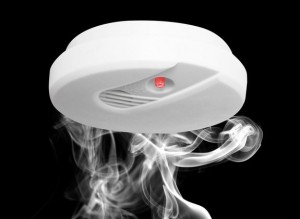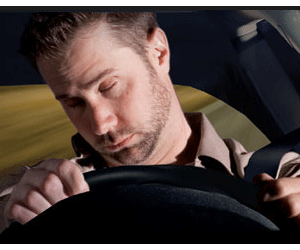 Drowsy driving is dangerous and often results in injury or death. Falling asleep at the wheel or the inability to pay adequate attention while driving may be a result of being sleep deprived. The National Highway Traffic Safety Administration estimates that every year there are 100,000 drowsy driving crashes reported to police costing $12.5 billion.
Drowsy driving is dangerous and often results in injury or death. Falling asleep at the wheel or the inability to pay adequate attention while driving may be a result of being sleep deprived. The National Highway Traffic Safety Administration estimates that every year there are 100,000 drowsy driving crashes reported to police costing $12.5 billion.
Category: Safety
Many Unintentional Injury Deaths are Preventable
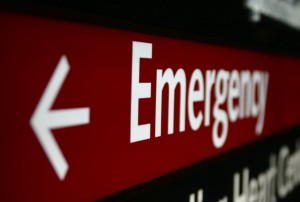 Approximately 39 percent of the premature deaths caused by unintentional injuries in the United States every year could be prevented, according to a new study from the Centers from Disease Control and Prevention.
Approximately 39 percent of the premature deaths caused by unintentional injuries in the United States every year could be prevented, according to a new study from the Centers from Disease Control and Prevention.
The study lists unintentional injuries as the fifth leading cause of premature death (defined as death before age 80). The top four causes are heart disease, cancer, chronic lower respiratory diseases and stroke.
Unintentional injury risk factors include drug and alcohol use (including prescription drug misuse), lack of safety belt and motorcycle helmet use, exposure to occupational hazards, and unsafe homes and communities. The study suggests that if all states had the lowest observed unintentional injury death rate, 37,000 lives could be prolonged every year.
via CDC: Almost 40% of unintentional injury deaths are preventable | 2014-05-06 | Safety+Health Magazine.
Benefits of Lean Safety Accident Investigations
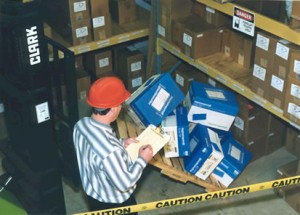 For centuries, the Japanese have promoted a philosophy of continuous improvement to all aspects of life, known as “kaizen.” In recent decades, American business leaders have started to recognize the impact kaizen has had on Japanese business competitiveness, and countless managers have adopted aspects of these techniques to improve their business processes. Now these principles can be used in workplace accident investigation asking five questions to get to the root cause instead of the traditional one question.
For centuries, the Japanese have promoted a philosophy of continuous improvement to all aspects of life, known as “kaizen.” In recent decades, American business leaders have started to recognize the impact kaizen has had on Japanese business competitiveness, and countless managers have adopted aspects of these techniques to improve their business processes. Now these principles can be used in workplace accident investigation asking five questions to get to the root cause instead of the traditional one question.
Here’s an example of how this works:
An individual was using a tape machine that automatically tapes around corners of boxes and the mechanism was
stuck in the up position. The worker pushed it down and the blade that cuts the tape came up and just barely cut the end of the worker’s finger.
The individual’s supervisor wrote up the incident report and said the root cause was the employee failed to follow lockout-tagout procedures. A lot of people would stop there because the individual agreed that he failed to follow the lockout-tagout procedure.
However, as a lean thinker, you might think that’s the root cause, but why did the worker push down that mechanism? Because it hung up. Well, why did the machine get stuck? Because either the air pressure wasn’t set right or it malfunctioned. Well, why was the air pressure not set right? Because we’re not sure what it was supposed to be set at. Some think it’s supposed to be 50 psi and others say 100 psi.
So the root cause is really that the machine hung up and people didn’t understand how to set it correctly. Because of that, we were able to assign the individual to work with maintenance to look into the manual to determine what the setting was supposed to be. Then they tested equipment to make sure that it worked correctly when it was set at the correct setting. That individual was asked to talk to their team and others in the plant that had the same equipment to ensure they understood the correct setting.
Those opportunities to improve safety would have been missed if you stopped at “The individual didn’t follow the lockout-tagout procedure.” By asking why five times — which is a lean tool — you’ll get to the real root cause so that you can improve the process rather than just focus on the person. The process is generally the problem, not the person. I fully understand that they didn’t follow lockout-tagout procedure, and I accept that, but when using lean, you have to go beyond that to get to the things you can improve.
Preventing Chain Saw Injuries During Tree Removal
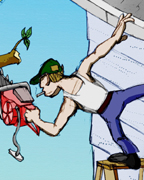 Each year, approximately 36,000 people are treated in hospital emergency departments for injuries from using chain saws. The potential risk of injury increases after hurricanes and other natural disasters, when chain saws are widely used to remove fallen or partially fallen trees and tree branches.
Each year, approximately 36,000 people are treated in hospital emergency departments for injuries from using chain saws. The potential risk of injury increases after hurricanes and other natural disasters, when chain saws are widely used to remove fallen or partially fallen trees and tree branches.
Safeguards against injury while using a chain saw
- Operate, adjust, and maintain the saw according to manufacturer’s instructions provided in the manual accompanying the chain saw.
- Properly sharpen chain saw blades and properly lubricate the blade with bar and chain oil. Additionally, the operator should periodically check and adjust the tension of the chain saw blade to ensure good cutting action.
- Choose the proper size of chain saw to match the job, and include safety features such as a chain brake, front and rear hand guards, stop switch, chain catcher and a spark arrester.
- Wear the appropriate protective equipment, including hard hat, safety glasses, hearing protection, heavy work gloves, cut-resistant legwear (chain saw chaps) that extend from the waist to the top of the foot, and boots which cover the ankle.
- Avoid contact with power lines until the lines are verified as being de-energized.
- Always cut at waist level or below to ensure that you maintain secure control over the chain saw.
- Bystanders or coworkers should remain at least 2 tree lengths (at least 150 feet) away from anyone felling a tree and at least 30 feet from anyone operating a chain saw to remove limbs or cut a fallen tree
- If injury occurs, apply direct pressure over site(s) of heavy bleeding; this act may save lives.
via Preventing Chain Saw Injuries During Tree Removal|Natural Disasters and Severe Weather.
Machine Safety
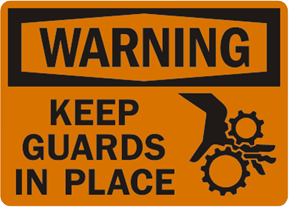 Machines can assist in improving production efficiency in the workplace. However these machines have moving parts, sharp edges, and hot surfaces with the potential to cause severe workplace injuries such as crushed fingers or hands, amputations, burns, or blindness. Safeguards are essential for protecting workers from these preventable injuries. Any machine part, function, or process that might cause injury must be safeguarded. When the operation of a machine may result in a contact injury to the operator or others in the vicinity, the hazards must be eliminated or controlled.
Machines can assist in improving production efficiency in the workplace. However these machines have moving parts, sharp edges, and hot surfaces with the potential to cause severe workplace injuries such as crushed fingers or hands, amputations, burns, or blindness. Safeguards are essential for protecting workers from these preventable injuries. Any machine part, function, or process that might cause injury must be safeguarded. When the operation of a machine may result in a contact injury to the operator or others in the vicinity, the hazards must be eliminated or controlled.
via CDC – Machine Safety – NIOSH Workplace Safety and Health Topic.
Keep your Family Safe from Home Fires
Although deaths and injuries from residential fires have decreased in the past several years, deaths from fires and burns are still the third leading cause of fatal home injuries (CDC). Seventy percent of these deaths are from inhaling smoke. Two-thirds of deaths from home fires occurred in homes with no smoke alarms or no working smoke alarms.
Fires are more likely to happen in certain areas or by certain equipment in your house. Be extra careful while you’re cooking, smoking, around candles, furnaces, electrical cords and fireplaces, and with children, toddlers and babies nearby.
According to the U.S. Fire Administration, cooking equipment, most often a range or a stovetop, is the leading cause of reported U.S. home fires and home fire injuries.
via Home Fire Safety, Fire Safety Checklist, Tips & Plan, keep your family safe from home fires.
Powered Industrial Trucks Safety
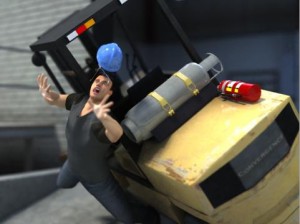 Powered industrial trucks, commonly called forklifts or lift trucks, are used in many industries, primarily to move materials. They can be used to move, raise, lower, or remove large objects or a number of smaller objects on pallets or in boxes, crates, or other containers.
Powered industrial trucks, commonly called forklifts or lift trucks, are used in many industries, primarily to move materials. They can be used to move, raise, lower, or remove large objects or a number of smaller objects on pallets or in boxes, crates, or other containers.
The hazards commonly associated with powered industrial trucks vary depending on the vehicle type and the workplace where the truck is used. Each type of truck presents different operating hazards. For example, a sit-down, counterbalanced high lift rider truck is more likely than a motorized hand truck to be involved in a falling load accident, because the sit-down rider truck can lift a load much higher than a hand truck. Workplace conditions also present different hazards. For example, retail establishments often face greater challenges than other worksites in maintaining pedestrian safety.
The best way to protect employees from injury also depends on the type of truck operated and worksite where it is being used.
Using Stepladders Safely
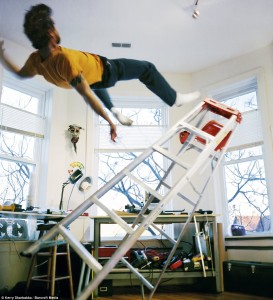 Stepladders range in size from 3 ft. to 20 ft in length along the side rail. Stepladders shorter than 3 ft are considered Step Stools. The highest standing level on a stepladder is slightly more than 2 ft from the top of the ladder. The highest standing level is required to be marked on the specifications label on the side rail of the product. Therefore, when planning your job, the maximum work height is established by adding the user’s height and reach to the highest standing level of the stepladder.
Stepladders range in size from 3 ft. to 20 ft in length along the side rail. Stepladders shorter than 3 ft are considered Step Stools. The highest standing level on a stepladder is slightly more than 2 ft from the top of the ladder. The highest standing level is required to be marked on the specifications label on the side rail of the product. Therefore, when planning your job, the maximum work height is established by adding the user’s height and reach to the highest standing level of the stepladder.
Proper Use
- A Stepladder requires level ground support for all four of its side rails. If this worksite condition does not exist, a stepladder should not be selected for the job.
- A Stepladder must not be used unless its base is spread fully open and the Spreaders locked. Stepladders are not to be used as Single Ladders or in the partially open position.
- In order to prevent tipping the ladder over sideways due to over-reaching, the user must climb or work with the body near the middle of the steps. The ladder should be set-up close to the work. Never attempt to move the ladder without first descending, relocating the ladder, and then re-climbing. Do not attempt to mount the ladder from the side or step from one ladder to another unless the ladder is secured against sideways motion.
- In an effort to avoid losing your balance and falling off the stepladder, the user must not step or stand higher than the step indicated on the label marking the highest standing level. The user must also not step or stand on the Top Cap or bucket/pail shelf.
- When ascending or descending the ladder, always face the ladder and maintain a firm hand hold. Do not attempt to carry other objects in your hand(s) while climbing.
- The braces on the rear of a stepladder are not intended for climbing or standing and must not be used for that purpose. Note, however, that special stepladders are available with steps on both the front and rear and are intended for two users at the same time.
- The anti-slip feet at the bottom of the stepladder side rails must be present and in good condition prior to using the ladder. The ladder must not be used on ice, snow or slippery surfaces unless suitable means to prevent slipping is employed.
- A stepladder must never be placed upon other objects such as boxes, barrels, scaffolds, or other unstable bases in an effort to obtain additional height.
via Stepladders.
Exposure to Bloodborne Infectious Diseases
 Exposures to blood and other body fluids occur across a wide variety of occupations. Health care workers, emergency response and public safety personnel, and other workers can be exposed to blood through needlestick and other sharps injuries, mucous membrane, and skin exposures. The pathogens of primary concern are the human immunodeficiency virus (HIV), hepatitis B virus (HBV), and hepatitis C virus (HCV). Workers and employers are urged to take advantage of available engineering controls and work practices to prevent exposure to blood and other body fluids.
Exposures to blood and other body fluids occur across a wide variety of occupations. Health care workers, emergency response and public safety personnel, and other workers can be exposed to blood through needlestick and other sharps injuries, mucous membrane, and skin exposures. The pathogens of primary concern are the human immunodeficiency virus (HIV), hepatitis B virus (HBV), and hepatitis C virus (HCV). Workers and employers are urged to take advantage of available engineering controls and work practices to prevent exposure to blood and other body fluids.
Campfire Safety
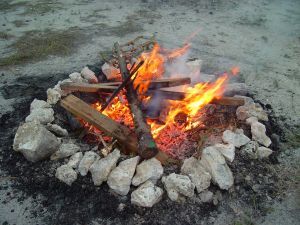 Campfires can be a great addition to your Campout. Below are some tips to get the most out of your campfire experience. Be sure to check with the campground manager or the local forest service about possible restrictions due to forest fire hazards.
Campfires can be a great addition to your Campout. Below are some tips to get the most out of your campfire experience. Be sure to check with the campground manager or the local forest service about possible restrictions due to forest fire hazards.
- Keep the fire small.
- Softwoods, like pine, fir, and cedar, are best for starting a fire.
- Have water available to extinguish the fire properly.
- Never leave a fire unattended.
- Maintain a debris-free area around the fire, so sparks cannot ignite vegetation and spread the fire.
- Make sure ashes are cold when you leave the fire.
- Build fires only in fire rings, stoves or fireplaces.
- Use only dead wood lying on the ground. Do not cut live trees, or branches from trees near the campsite.
- Start the fire by building a small teepee of dry sticks and igniting it with a match. As the fire gets started, add larger pieces of wood.
- Extinguish all fires by pouring water on them, stirring the ashes and pouring more water.
- Leave your fire ring clean for the next campers.

